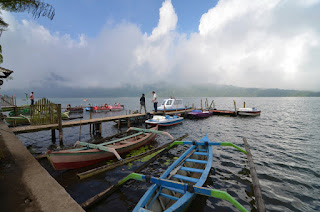Keraton Jimbaran Beach Resort is an elegant beachfront property that honours Bali’s cultural and artistic legacy with a collection of 102 guest rooms and private villas. The property is set within a mature tropical garden and has direct access to the pristine white sands of Jimbaran Bay.
It is a place where travellers can truly unwind in an exotic setting that is considerably removed from the trappings of mainstream tourism. Keraton Jimbaran Beach Resort celebrates living life to the fullest and taking each new day simply as it comes.
More information click here
Exceptional Dining Experience
Joglo Restaurant, the restaurant at Keraton Jimbaran Resort & Spa gives culinary experience that takes you on a full flavoured journey.
Choose from our signature dishes to satiate your appetite with range of specialities from local delights to International cuisine. Our menus are driven by the freshest ingredients and seasonal products to create dishes that will entice you coming back for more.
Celebrations of The Heart
With its native Balinese gardens and pristine stretch of white sand beach, Keraton Jimbaran Resort & Spa provides an idyllic venue for your destination wedding. It is a place to celebrate in style before your dearest friends and loved ones. Exchanging your vows beneath the tropical blue skies of Bali will make for an unforgettable day to treasure always.
Facilities and Actifities
An elegant, boutique style resort hosting 102 elegant rooms with 3 suites and 6 villas.
All rooms have private bathroom and balconies, individually controlled air conditioning and television with parabola, direct dial telephone with I.D.D, safety box, fridge, hair dryer and room service.
Beach Activities
The exclusive location of the Keraton Jimbaran Resort & Spa on Jimbaran Bay offers complete seclusion on one of the best white sand beaches in Bali, where evenings bring spectacular sunsets. Very tastefully designed resort, and swimming in its swimming pool has to be experienced to be believed. Even if you are staying at another Resort this time, we recommend to visit the Resort and its pool, it makes a nice day trip, and you probably ending up wanting to stay there next time. If you like walks on the beach at sunset time this is the place for you, within walking distance there are many inexpensive but excellent grilled seafood restaurants.
Guest Activities
You will never get bored while staying with us. We have arranged many activities for our in-house guests and you also may have experience of shopping in traditional market.
Recreational Facilities
• Beach Volley BallMeeting Facilities
• Rental Cars
• Swimming Pool
• Chess
Book business conference Venues at Keraton Jimbaran Resort & Spa. Your every need will be taken care of during the events by a dedicated team who are well versed in the art of Balinese hospitality. All of our personalized services will ensure that your events with us at Keraton Jimbaran Resort & Spa is successfully plan.
Meeting Facilities:
• Flip chart
• Laser Pointer
• LCD Projector & Screen
• Meeting Room
• Microphones, 2 wireless & 2 cable
• Note pad and Pen
• Registration Table
• Sound System
• Water and Mints
• Wi-Fi Internet in the meeting room
















